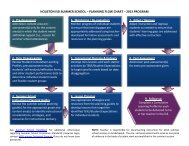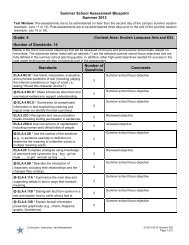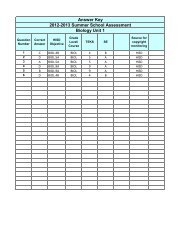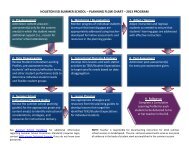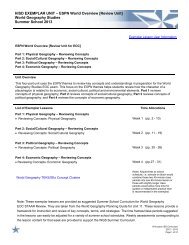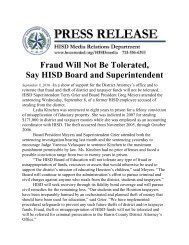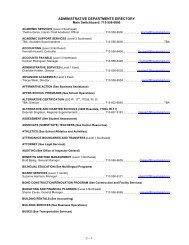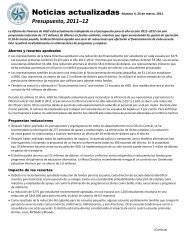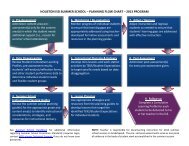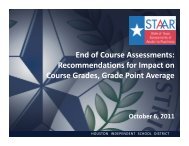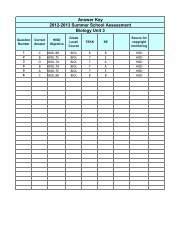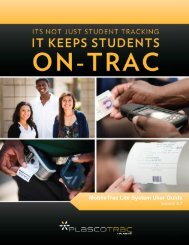SSK Unit 4.2 Planning Guide
SSK Unit 4.2 Planning Guide
SSK Unit 4.2 Planning Guide
- No tags were found...
Create successful ePaper yourself
Turn your PDF publications into a flip-book with our unique Google optimized e-Paper software.
Instructional ConsiderationsHISD PLANNING GUIDEEnglish Language Arts Grade 7SUMMER SCHOOLSTAAR Connection- There are STAAR test released item for ELA.7.2B. Creating assessment items that have thesame or similar stems help students prepare for the STAAR exam. See Released STAAR Items, (Selection 2 Item 1) inAssessment Connections for examples. The Texas Education Agency has provided a helpful resource page that can beaccessed at the main TEA website.Instructional Accommodations for Diverse LearnersA student receiving special education services may receive instructional and assessmentaccommodations. The ARD/IEP committee must document instructional and assessmentaccommodations in the student’s IEP. See the Texas Education Agency forTexas Student Assessment Accommodations information.Instructional Strategies/ActivitiesReadingNonlinguistic RepresentationGraphic Organizers- Plot DiagramBegin by reviewing the elements of plot. Then have students create visual representations of the elements of plot toreinforce vocabulary development. See Plot Line Diagram and Best Practices Toolkit in Resources.Cues, Questions, and Advance OrganizersGraphic Organizers- Who’s Who? The Character Directory (ELA.7.6B)This graphic organizer allows students to record characters’ names, relationships/roles, locations, and descriptions.Encourage students to keep this information in their Literacy Notebooks. See Resources for Who’s Who? TheCharacter Directory, Burke’s Tools for Thought, and the English Companion website. This strategy is particularlyhelpful with striving readers and ELL students.Cues, Questions, and Advance OrganizersGraphic Organizers- Characterization Chart (ELA.7.6B)To assist students in identifying the modes of characterization and in making valid inferences, use a graphic organizer.Be sure to model how to complete the three sections. See Resources for a Characterization Chart template.What the Story Says Method of Characterization What It Tells Me about theCharacterCues, Questions, and Advance OrganizersGraphic Organizer- “So What” Dialectical Journal (ELA.7.Fig19D)Instruct students to complete a graphic organizer as they read and make connections to a text. Students are to recordtheir connection and then ask themselves, “How does this thinking help me better understand this text?” This questionprovides the ‘So What?’ of the graphic organizer. Students are not only interacting with a text but also metacognitivelybuilding their understanding. See “So What?” Dialectical Journal and Tovani’s Do I Really Have to Teach Reading?Content Comprehension Grades 6-12 in Resources.Connection to the TextSo What?Instructional Accommodations for Diverse Learners Pair struggling ELL’s with more proficient students to provide models as students begin to completethis on their own. Provide sentence starters (i.e., This reminds me of…) and modify the graphic organizer.Text EvidenceConnection - English Language Proficiency Standards (ELPS) - Literacy Leads the Way Best Practices - Aligned to Upcoming State Readiness Standard- State Process Standard R - State Readiness Standard S - State Supporting Standard© Houston ISD Curriculum2012 – 2013Page 6 of 8




